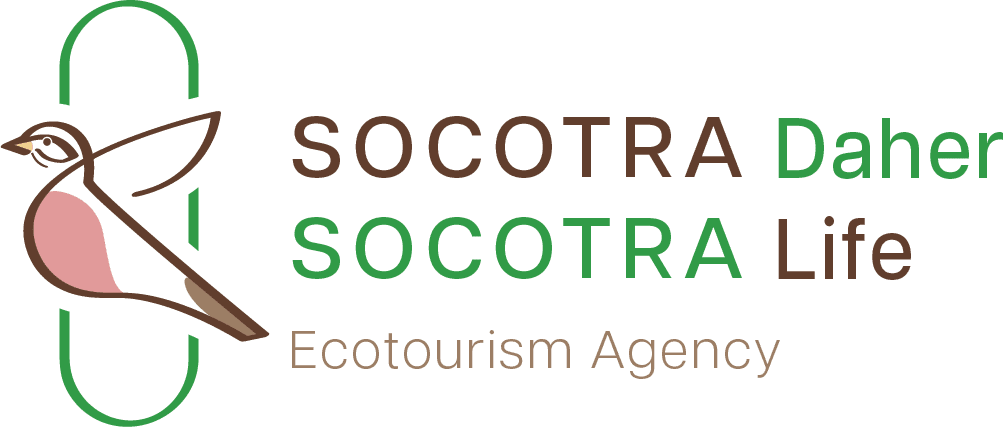The island of Socotra is famed for its stunning landscapes and unique flora and fauna resulting from its geological past. There is indeed a marked variety in topography and geological features on Socotra. There are Precambrian granite outcrops, Paleocene–Eocene limestone plateaux with steep cliffs and large cave systems, and Quaternary coastal sandy regions. During our short trip with the Socotra Dream, we were able to sample them all.
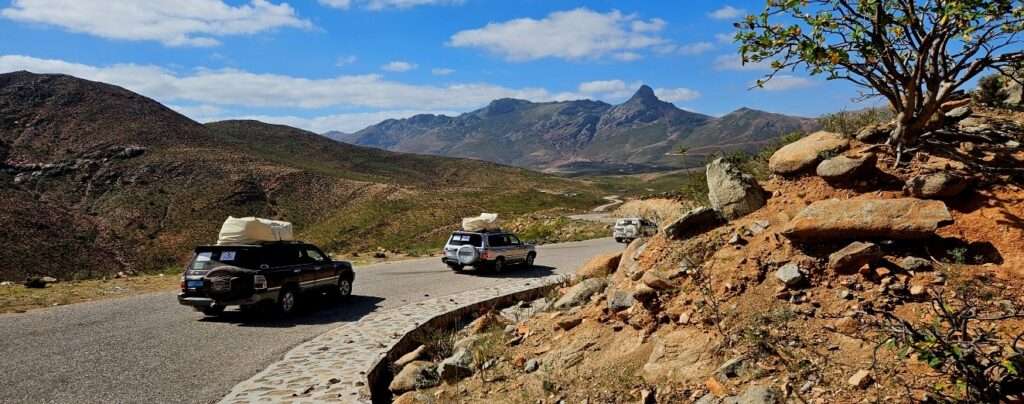
Outside the capital Hadiboh the hills were green with crotons and closer to the shore there were halophytic plants, pristine white beaches and sand drifts creeping up the limestone cliffs. Closer to the westernmost part of the island both composition and colour of the rocks changed from the layered sedimentary strata to more pointy, darker ridges. In this part of the island Proterozoic basement rocks are exposed at the surface and cut by younger, darker intrusions and dykes, like those in the Arabian Shield. Even at the beach where we camped, three exposures of peralkaline granite (red), biotite (grey) and basalt (black) were cropping out in neat parallel sequence. Over the long geological history of this landmass, which began with the supercontinent Gondwana, Socotra was formed, separated as a result of gradual rifting, and began to move away from the African continent. The landmass and its basement rocks were gradually uplifted, denuded and exposed to weathering, a process which continues today. The camping area of the beach was alive with hermit crabs and boasted many conical ―female attractor mounds. Our morning treat was a sight of dolphins playing just offshore.
Land inwards, within the Homhil protected area, frankincense trees (Boswellia sp.), Dragon blood trees (Draceana cinnabari), bottle trees (Adenium obesum socotranum), cucumber trees (Dendrosicyos socotranus), aloe, euphorbia and many flowers were in the spotlight. We hiked along a magnificent, steep wadi bed following an ancient fault line towards a natural infinity pool. The view from the pool was spectacular as we had a refreshing swim before hiking down the steep side of the cliff.
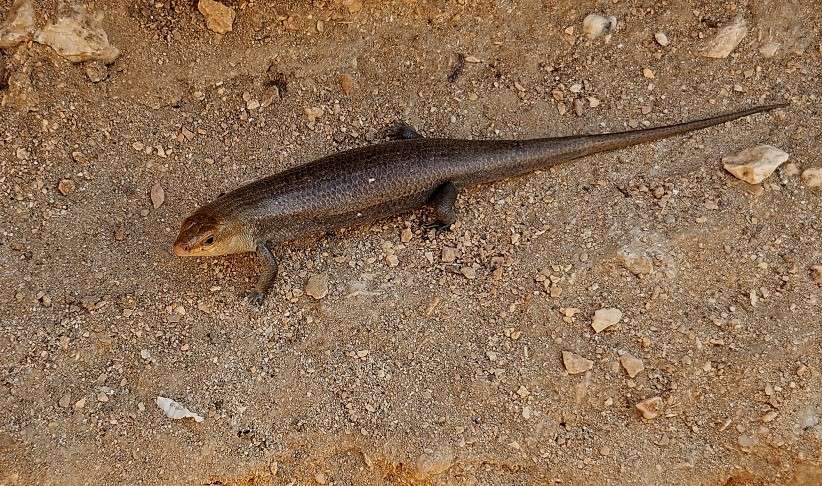
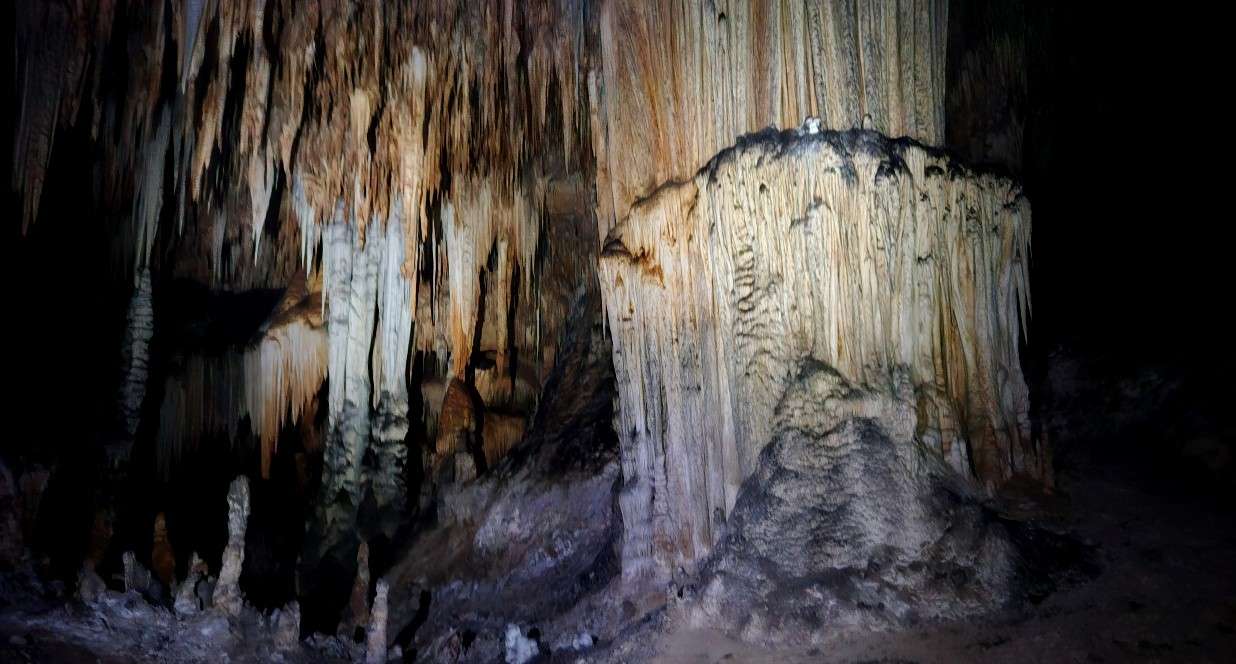
Our progress was slow as we were constantly distracted by rock formations, plants, lizards, spiders, darters and butterflies.
Another fabulous location we visited was the Hoq Cave, a huge dissolution cavity common in karst environments yet full of surprises. The Hoq Cave is spectacular in many ways, its size and length (we walked 1.5km of its 3km length), cavernous passages, giant stalactites and stalagmites that transformed it into a dark and still wonderland of columns, curtains, lakes, terraces and other complex formations coming to view in a flashlight. A small lake in the middle of the cave is a home to the tiny eyeless white endemic shrimp.
Dihamri marine protected area, down at sea level encompassed another Proterozoic outcrop of peralkaline granite and the white coral debris on the beach was intermixed with the red pebbles. Underwater, the reefs were teeming with life. We saw several turtles, box fish, puffer fish, wrasses, parrot fish, Picasso triggerfish, butterfly fish, leopard moray and tangs. There are other protected areas on the island where turtle species are monitored and the local people learn about ecology and sustainability of their beautiful but fragile ecosystem.
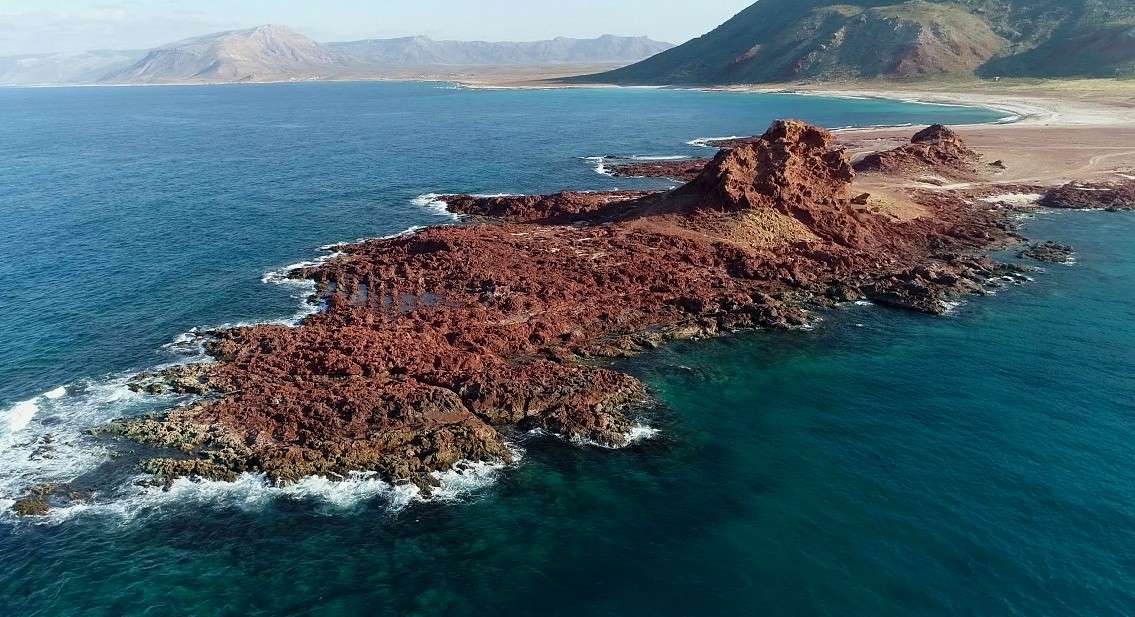
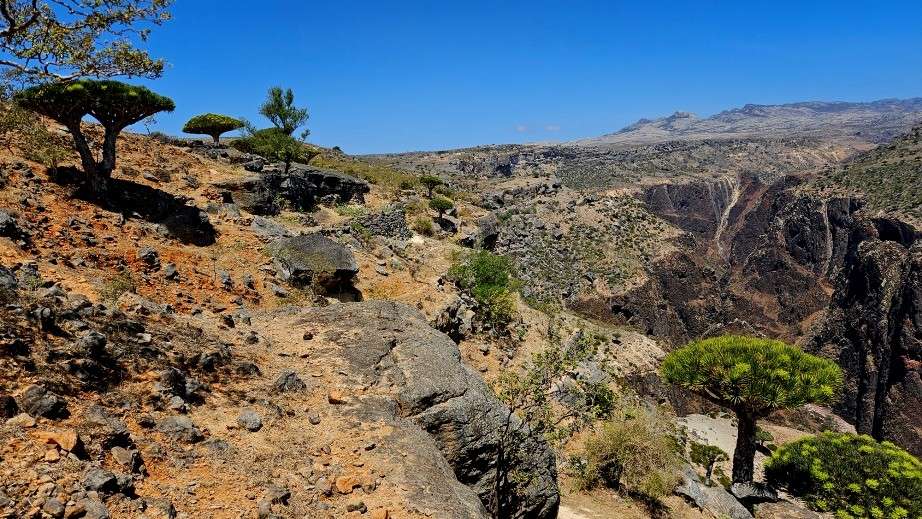
Many ancient faults cut through the central zone of the island; one of them is a spectacular gorge on the Dixum Heights with sheer cliffs and an amalgamation of sediments of varied provenance. Dragon blood trees grow along the crumbling limestone cliffs of the gorge and when in flower attract butterflies and bees. As we stood mesmerised by the view, several children from a nearby settlement rushed to meet us bringing along purses filled with Dragon blood tree pigment and incense. We made up for disappointing sales with sweets and lollypops. Exploring another Dragon blood tree area on our own was a liberating experience and it was easy to lose track of time among the ancient trees. Camping on the beach under the full moon was equally surreal.
The beach on the southern side of the island was wider, more humid and dotted with small dunes dominated by sea lavender and tamarisk sparkling with dew in the morning sun. We visited another cave where Ficus, ferns and maidenhair grew at the entrance and natural basins filled with the clear, constantly dripping water.
We traversed steep, rugged mountains, sprawling wetlands, mangroves and lagoons, forming unique habitats. There were plenty of stops along the way to water camels or check the many Boswellia species. Ahmed made sure we all knew the difference between a desert rose and a cucumber tree at the end of the trip. We visited an enigmatic petroglyph site, where the early inhabitants of the island left numerous representations of things important to them: snakes, turtles, camels, feet and crosses/ flowers.
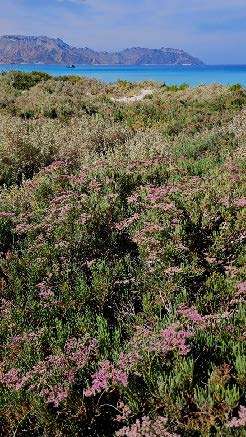
We had an amazing boat trip and followed dramatic coastal cliffs of Qalansiya to Shu‘ab beach. Along the way we encountered terns, brown boobies, Socotra cormorants, buzzards, sooty gulls and more. A lonely rock surrounded by the sea was home to a special species of Frankincense (Boswellia nana). Once on the beach, sea lavenders (Limonium sp) flourished above the waterline and there were a few – now dry – flowers of the haloparasitic Cistanche tubulosa. It was our last chance to swim with the dolphins, but they eluded us yet again and we could only observe them from the drone. The dolphin cows swam closer to shore with their young while a larger pod of two species, the Bottlenose dolphin (Tursiops truncatus) and the Humpback dolphin (Sousa chinensis) were further away.
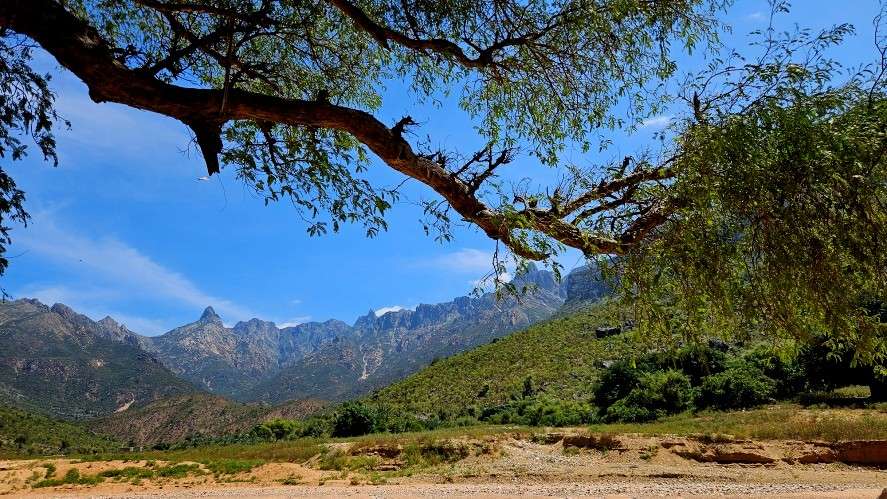
On our last day we ventured into the Ayhaft Canyon and enjoyed spectacular views and a cool break under a giant Tamarind tree. Most prominent topographic features were in full view again, the limestone plateau (with a strikingly white, lichen covered upper section) and the jutting granitic Haggier Mountains in the distance.
We also visited two schools on the island bringing much needed school supplies and stationery. Our gifts were welcome yet inadequate as there is shortage of everything on the island. Hopefully with the continued support from both KSA and the UAE the conditions of the local population will gradually improve.
Our guides and hosts Ahmed and Fouad, Eissa and Murad from the Socotra Dream were an invaluable source of information about nature, history, local legends and daily life on the island. Thanks to them we learned a lot about the real life and customs of the Socotrans.
Many thanks to Sonja for coordinating and organising this fabulous trip, Marion – our group leader and Ahmed and his team from Socotra Dream for showing us their home. Our group members hailing from various countries and professional backgrounds all shared the same curiosity and passion for natural history and were ready to share and discuss their findings with enthusiasm and good cheer. Thanks to all – it was an unforgettable experience!
Contribution and photos by Gosia van Unen
